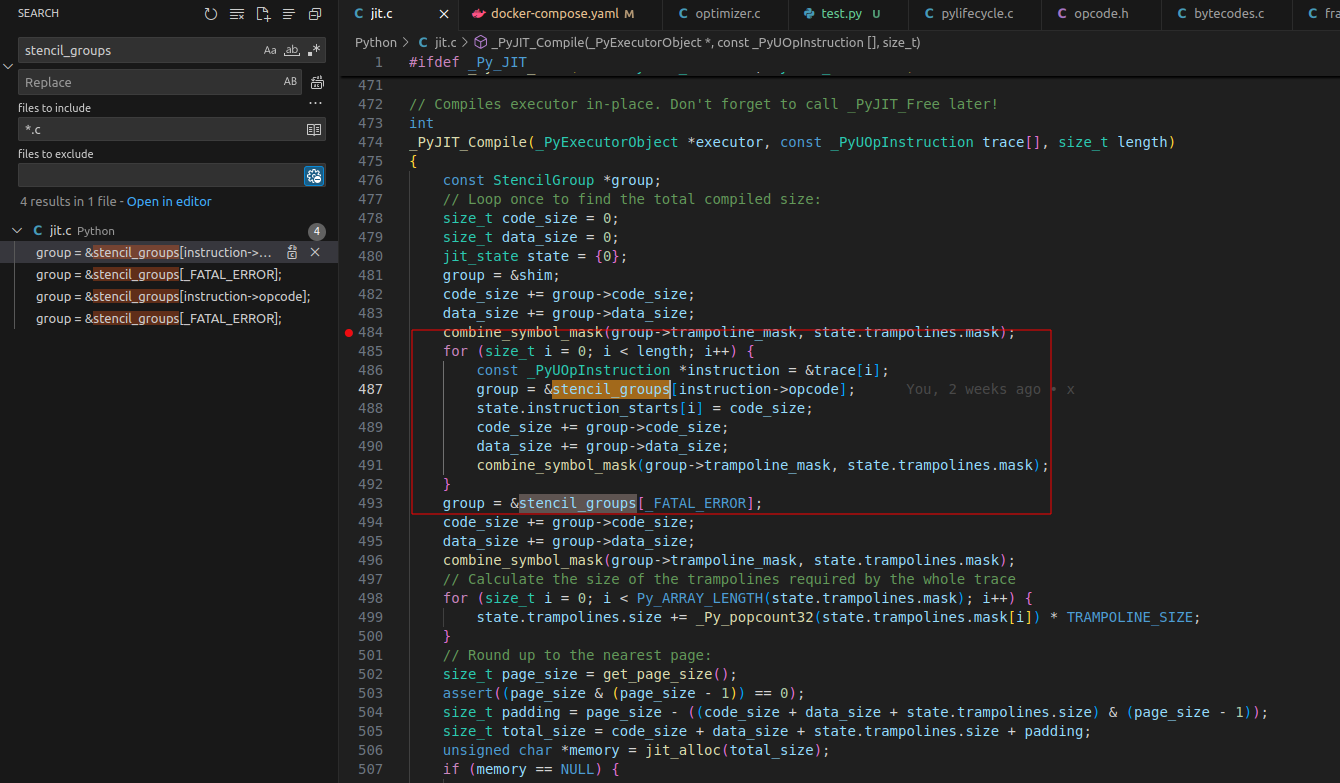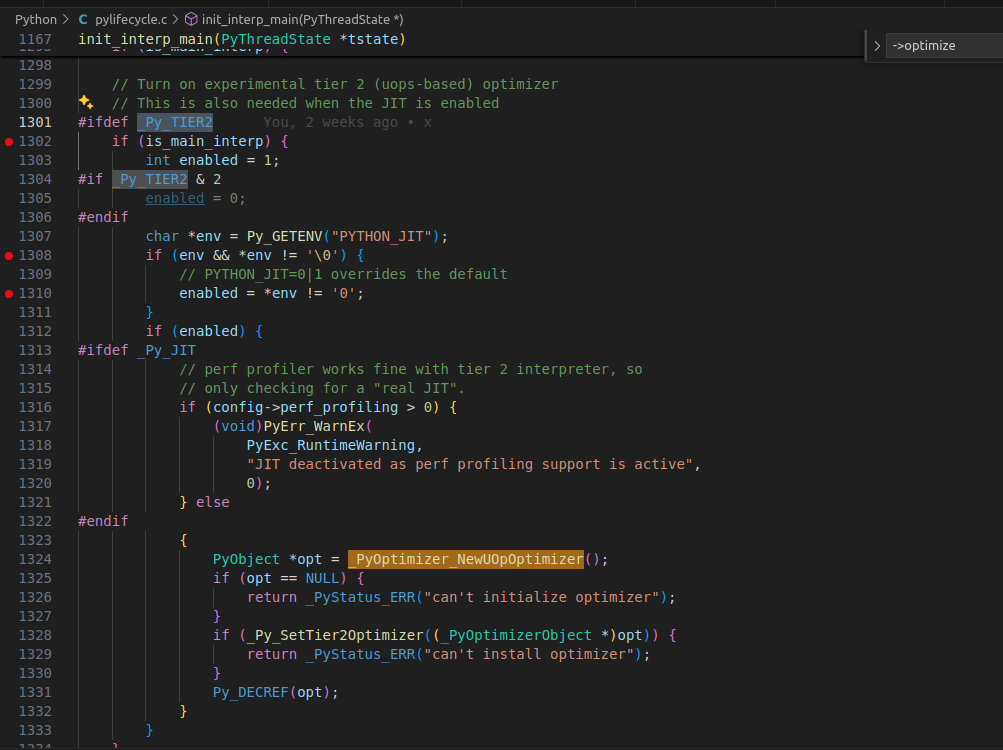前面介绍那么多只是为了做一些铺垫,每个操作码对应一个 emit 函数。什么时候调用这些函数就是我们接下来需要研究的。
回顾
- 如何在 Ubuntu2404 上编译 PythonJIT
- PythonJIT 中的机器代码是如何生成的
- PythonJIT-copy-and-patch 的处理的详细过程
- PythonJIT 反向推断 patch 的生成过程
// Compile the shim, which handles converting between the native
// calling convention and the calling convention used by jitted code
// (which may be different for efficiency reasons).
JIT 代码转换时机

在项目代码内搜索 stencilgroups 可以看到它在函数 _PyJIT_Compile 被索引,index 为操作码。往下继续看代码,stencilgroups 在两个循环里被索引。第一个循环设置代码块的开始 state.instruction_starts[i] = code_size 位置;而第二个循环是调用 OpCode 对应的 emit 函数,将调用转化为我们的 jit 代码。完成内存转换后,将这块内存标记为可执行,调用 c 函数 mprotect,标记失败返回 -1,释放内存。
static int
mark_executable(unsigned char *memory, size_t size)
{
if (size == 0) {
return 0;
}
assert(size % get_page_size() == 0);
// Do NOT ever leave the memory writable! Also, don't forget to flush the
// i-cache (I cannot begin to tell you how horrible that is to debug):
#ifdef MS_WINDOWS
if (!FlushInstructionCache(GetCurrentProcess(), memory, size)) {
jit_error("unable to flush instruction cache");
return -1;
}
int old;
int failed = !VirtualProtect(memory, size, PAGE_EXECUTE_READ, &old);
#else
int failed = 0;
__builtin___clear_cache((char *)memory, (char *)memory + size);
#ifndef MAP_JIT
failed = mprotect(memory, size, PROT_EXEC | PROT_READ);
#endif
#endif
if (failed) {
jit_error("unable to protect executable memory");
return -1;
}
return 0;
}
用 uops 缓冲区创建执行器

JIT 是 PythonJIT 的核心,通过 JIT 生成的代码,我们可以看到它是通过 uops 缓冲区来执行的。这个缓冲区是一个很小的内存区域,用来存储 CPU 的微指令。在 JIT 代码生成后,我们需要将这些代码放入 uops 缓冲区,然后执行。 可以理解为一个如下函数,传入 JIT 生成的代码,然后执行。
static void
execute_jit_code(unsigned char *memory, size_t size)
{
void (*fn)(void) = (void (*)(void))memory;
fn();
}
何时开启 JIT 优化

是否开启 jit 有一部分有预处理定义控制(即 PyJIT 定义开启),另一部分就是 config->perf_profiling == 0,否则会抛出异常。PyOptimizerNewUOpOptimizer 将 uopoptimize 函数赋值给了 opt->optimize,这个函数是在 Python/optimizer.c 中定义的。JIT 的核心优化逻辑就在 uopoptimize 函数中。
PyObject *
_PyOptimizer_NewUOpOptimizer(void)
{
_PyOptimizerObject *opt = PyObject_New(_PyOptimizerObject, &_PyUOpOptimizer_Type);
if (opt == NULL) {
return NULL;
}
opt->optimize = uop_optimize;
return (PyObject *)opt;
}
比如,translatebytecodetotrace 返回的长度为 0;环境变量 PYTHONUOPSOPTIMIZE 设置为 0 等都不会开启 JIT 优化。uopoptimize 完成 PyExecutorObject **execptr 的替换,其函数的定义如下:
static int
uop_optimize(
_PyOptimizerObject *self,
_PyInterpreterFrame *frame,
_Py_CODEUNIT *instr,
_PyExecutorObject **exec_ptr,
int curr_stackentries,
bool progress_needed)
{
...
}
JIT 优化算法的核心逻辑可以在 uop_optimize 函数中找到,其最终的目的就是决定是否使用 JIT 优化。